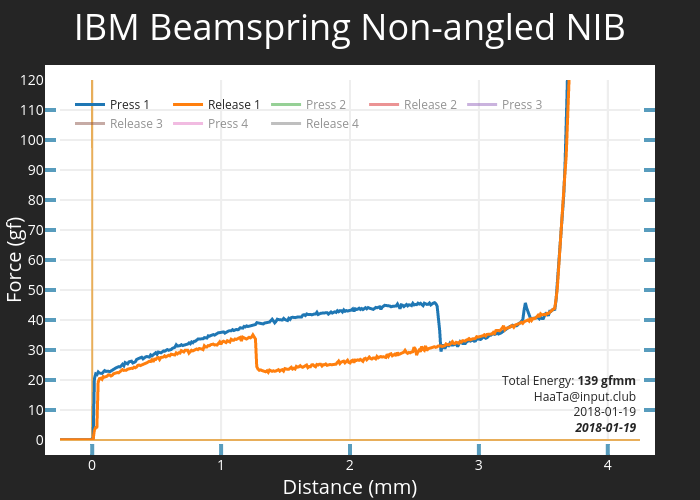Silo switches are the culmination of two different projects Input Club has been working on for a number of years. The first, designing an analog Hall Effect keyboard switch. The second, how to modernize a Beam Spring switch and mold it into Cherry MX-like dimensions.
I’ll be writing another article solely on analog switches in the near future, so stay tuned by joining the mailing list for these projects - Keystone Mechanical Keyboard Waitlist!
Compacting a Beam Spring mechanism into something similar to a Cherry MX switch has a lot of challenges.
First, IBM Beam Spring switches are huge by modern switch standards. By making the switch tall IBM was able to stack two different springs (coil spring and a beam spring) and allow room for the capacitive fly plate to move up and down. The activation mechanism is attached directly to the tactile/click mechanism — reliability increases as a result. As a counterpoint, Kailh BOX White switches may not have their click aligned to switch activation, as the click bar has nothing to do with the contact leaf that turns the switch on and off. Contact switches also lack an adjustable activation point, which creates limitations for typists with different preferences.
For Silo switches, the click has been separated from the sensing technique as well (magnetic sensing). Unlike contact-based switches, however, Silo switches have adjustable activation and deactivation points via their Hall Effect sensor field strength data (magnet distance from sensor). This means you’re not limited to a set position when riding the activation point. Using the linked graph for the Beam Spring Prototype as an example (Beam Spring Graph), if activation was set at 2.2 mm and deactivation at 0.8 mm you would have to press / release 1.4 mm x 2 = 2.8 mm to do a double tap. This creates significant flexibility for typists vs. a contact switch — which is stuck at a single activation point that may not match your typing style. Contactless sensing also eliminates contact leaves, resulting in more room for a beam spring and its resulting clicky goodness.

Next — keycaps! In our opinion, Cherry MX keycap mounts aren’t an optimal design. They are the keycap standard, though, so we’re working around them in our projects so you can keep using fancy keycap sets with our keyboards. The main challenge of integrating a beam spring switch is actually having enough room to place the beam and tensioner somewhere inside the confines of a Cherry MX-sized housing. The keycap mount plays a role in this, as it must fit inside the switch when pressed.

When designing keyboards, It’s impossible to forget the most important feature of any modern keyboard: backlit RGB LEDs. Joking aside, any modern switch that doesn’t consider backlighting isn’t a complete work. I became a keyboard enthusiast and designer (specifically while learning Colemak) because I was frustrated that I couldn’t type well in the dark. Silo switches will support dual LEDs (North and South orientation). Silo switches will also support switch rotation (180 degrees), so this was doubly necessary. If you’re one of those people with absurdly thick keycaps (which can impact switch housings in certain orientations) you’ll be able to hotswap-rotate your switches any which way you’d like (the pictured prototype doesn’t have this feature yet, but we should have the next round of samples soon).
Why can’t I use these on my existing board?
Standard MX type keyswitches are either soldered or socketed into keyboards. More specifically, they are contact based, and the contact mechanism is intrinsically tied to the feel of the keyswitch. As part of us wanting to improve on existing technology, the Silo switches are contactless, using Hall Effect sensors that require entirely different circuit board designs.







